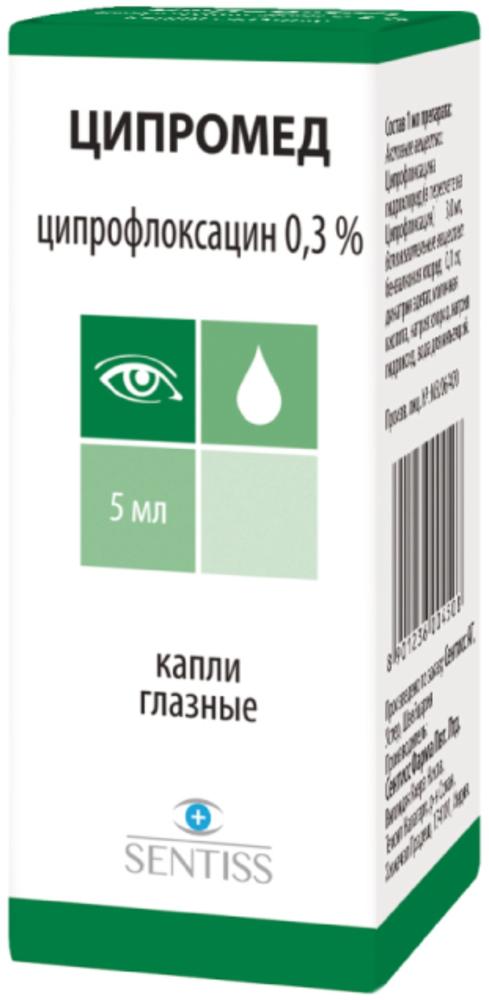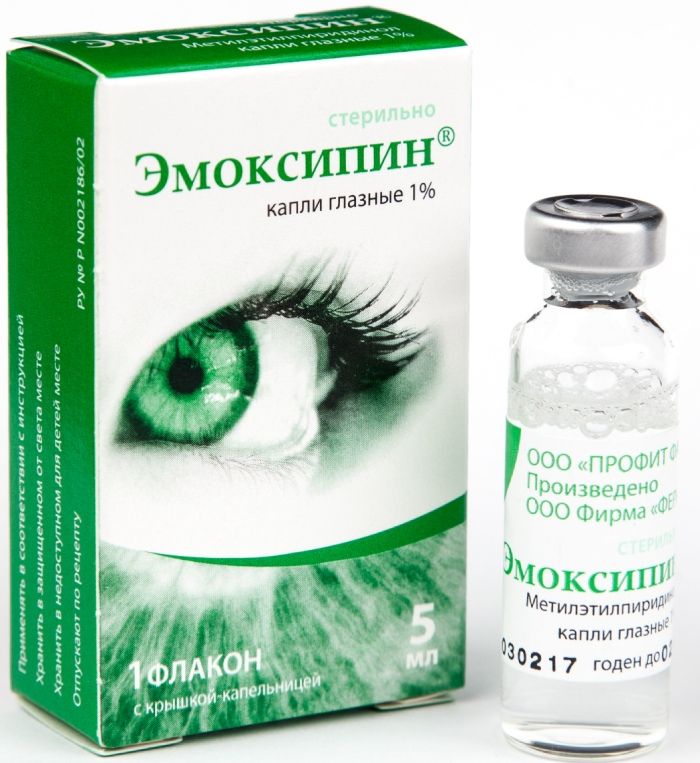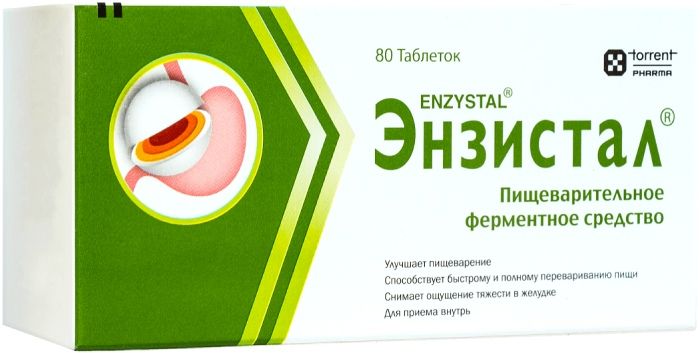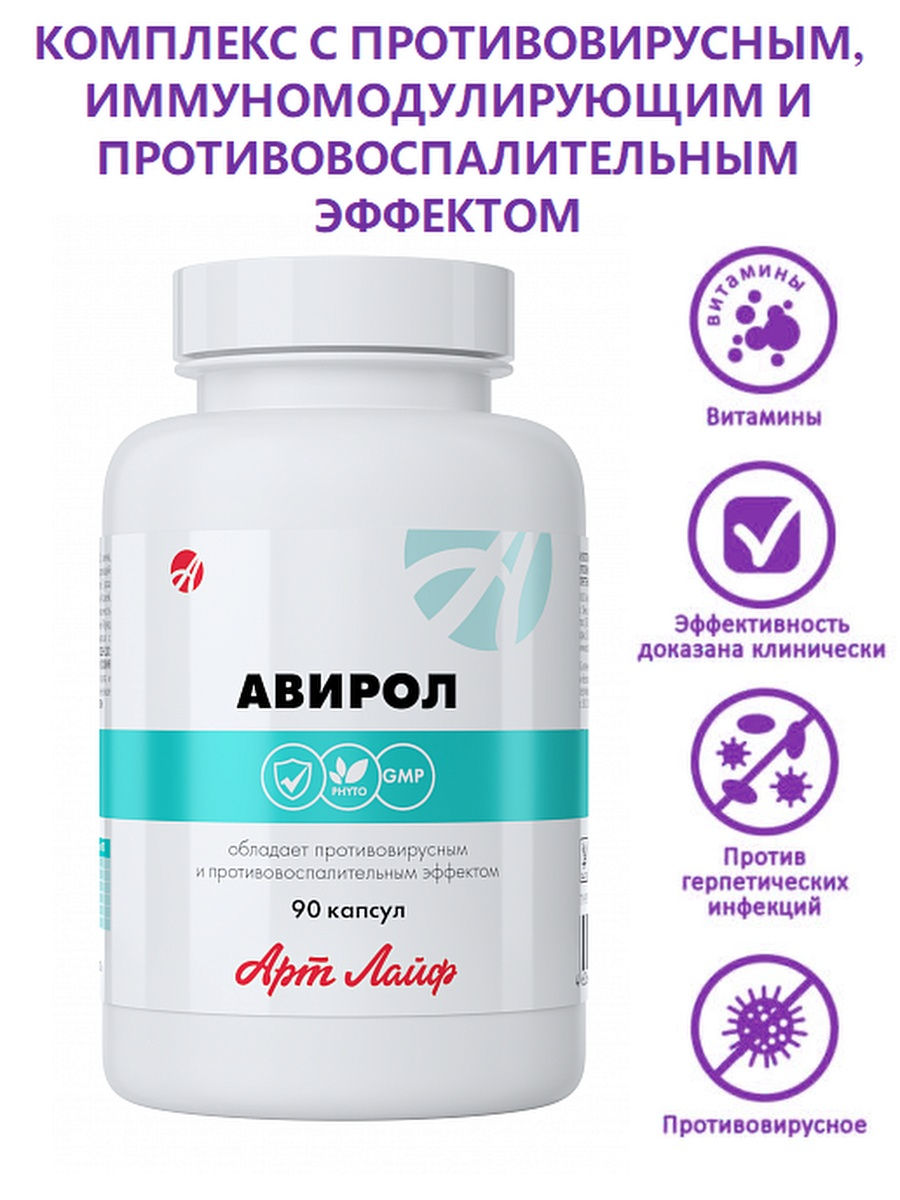- No products in the cart.
Tsipromed drops Ch. 0.3% 5 ml-vial cap.
$2.46
Tsipromed drops Ch. 0.3% 5 ml-vial cap.
Description
Composition
Active substance:
1 ml contains: ciprofloxacin (in the form of a lactate) 3 mg ,.
Excipients:
Benzalkonium chloride, disodium edetate, lactic acid, sodium chloride, sodium hydroxide, water for injections.
Description:
The clear solution from colorless to pale yellow.
Product form:
0.3% eye drops.
5 ml into a plastic dropper bottle-screw cap. Each vial-IV together with instructions for use placed in a cardboard box.
5 ml in dark glass bottles, closed with a rubber stopper, a crimped aluminum cap with plastic safety cap. In one glass vial with a sterile dropper, packed in a plastic bag and placed in a cardboard box, together with instructions for use.
Contraindications
Hypersensitivity to the drug or to other quinolones, pregnancy, lactation and children under 1 year.
Dosage
0.3%
Indications
Bacterial inflammatory diseases of the eye and its appendages: acute and subacute conjunctivitis; keratitis; anterior uveitis; blepharitis and other inflammatory diseases of age; dacryocystitis; prevention and treatment of infectious complications after eye wounds and its appendages, and in operations on the eyeball.
Interaction with other drugs
A solution of ciprofloxacin is incompatible with drugs, pH 3-4, are physically or chemically unstable.
Overdose
In case of accidental reception Tsipromeda into specific symptoms are absent. Nausea, vomiting, diarrhea, headache, fainting, anxiety.
Treatment – conventional emergency measures, sufficient supply of fluid in the body, creating acidic urine to prevent crystalluria.
pharmachologic effect
Pharmacological group:
Fluoroquinolone antimicrobial sredstvo-.
Pharmacodynamics:
Tsipromed (ciprofloxacin) – antimicrobial agent from the group of fluoroquinolones has a broad spectrum of antibacterial action, exerts a bactericidal effect. The drug inhibits the enzyme DNA gyrase bacteria, thereby disturbed DNA replication and synthesis of cellular proteins of bacteria. Tsipromed acts as breeding microorganisms, and the rest are in phase.
The spectrum of antibacterial action Tsipromeda comprises gram-negative microorganisms: Escherichia coli, Salmonella spp, Shigella spp, Proteus spp… (Indole-positive and indole-negative), Morganella morganii, Citrobacter spp., Klebsiella spp., Enterobacter spp., Yersinia spp., Vibrio spp., Campylobacter spp., Hafnia spp., Providencia stuartii, Haemophilus influenzae, Pasteurella multocida, Pseudomonas spp., Gardnerella spp., Legionella pneumophila, Neisseria spp., Moraxella catarrhalis, Acinetobacter spp., Brucella spp., Chlamidia spp. By Tsipromedu also sensitive Gram-positive microorganisms: Staphylococcus spp, Streptococcus pyogenes, St.. Agalactiae, Corynebacterium diphtheriae, Listeria monocytogenes. The preparation of low toxicity.
Pharmacokinetics:
Ciprofloxacin well when applied topically penetrate the tissue of the eye. After a single installation, its concentration in the moisture anterior chamber after 10 minutes was 0.1 mg / ml. The maximum concentration measured at 1 hour during moisture anterior chamber is 0.19 mg / ml.
After 2 hours the concentration starts to decrease, but its antibacterial effect in corneal tissue is maintained until 6 hours in the moisture of the anterior chamber up to 4 hours. The half-life of blood serum in the local application is 4-5 hours. The drug is eliminated via the kidneys predominantly (up to 50%) in unchanged form and 10% as metabolites; approximately 15% is excreted through the intestines; in breastfeeding mothers – partly excreted in breast milk.
After installation possible systemic absorption of the drug. When treating for 7 days, on average, 4 times a day in both eyes, the average concentration of less than 2 ng / ml.
Conditions of supply of pharmacies
By prescription.
side effects
Immediately after the installation, there may be a slight burning sensation over 1-2 minutes, itching, pain, redness of the eye mucosa. May develop allergic reactions. Eyelid edema, photophobia, lacrimation, foreign body sensation in eyes, an unpleasant taste in the mouth immediately after instillation, reduced visual acuity, the appearance of a white crystalline precipitate in patients with corneal ulcer, keratitis, keratopathy, stains or corneal infiltration, superinfection development.
special instructions
If the patient wears soft contact lenses, then it should not be used Tsipromed as a preservative may be deposited in soft contact lenses and may have adverse effects on the eye tissues.
It is hard to remove contact lenses before instillation of the preparation and putting them again only after 15 minutes.
When using other ophthalmic drugs interval between their introduction should be at least 5 minutes.
Immediately after instillation of the drug may reduce the clarity of vision and slow mental reactions, which may reduce the ability to actively participate in road traffic, maintenance of machines, or to perform work without support. In an even greater extent this is the case, while the use of the drug with alcohol.
Storage conditions
At temperatures above 25 ° C, protected from light. Do not freeze. Keep out of the reach of children.
Dosing and Administration
Locally. The drug instilled 1-2 drops into the conjunctival sac. installations frequency depends on the severity of the inflammatory process.
In acute bacterial conjunctivitis, simple squamous and ulcerative blepharitis Tsipromed administered from 4 to 8 times a day depending on the severity of the disease. course of treatment for 5 to 14 days.
When the drug is given keratitis 1 drop of not less than 6 times a day, with a positive effect the maximum rate of treatment depending on the severity of the corneal lesion is 2-4 weeks.
With the defeat of Pseudomonas aeruginosa corneal Tsipromed prescribed as often as possible – at least 8-12 times a day 1 drop. The course of treatment depends on the disease and usually is about 2-3 weeks.
If anterior uveitis drug instilled 8-12 times a day 1 drop.
In acute dacryocystitis and kanalikulitah Tsipromed administered 6-12 times per day, in chronic – 4-8 times a day 1 drop.
In wounds the eye and its appendages to prevent secondary infection Tsipromed prescribed for 1-2 weeks and 1 drop 4-8 times a day.
For the prevention of inflammatory diseases after surgery perforated eyeball Tsipromed administered 4-6 times a day 1 drop for the entire duration of the postoperative period, typically from 5 days to 1 month.
Information
Appearance may differ from that depicted in the picture. There are contraindications. You need to read the manual or consult with a specialist
Additional information
| Weight | 0.100 kg |
|---|---|
| Manufacturer | Sentis |













There are no reviews yet.